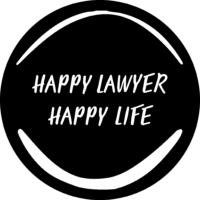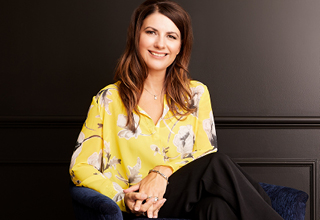Shall we dance?
I have recently started Latin dancing classes with my hubby Craig.
We have been talking about doing this for about 15 years, and finally after a friend challenged my thinking, we signed up and started in the new year!
We love it!
As parents of two kids, each running our own businesses, we don’t get a lot of time for – just us. So, this is something we have really enjoyed (even if we don’t swap partners as the rest of our class do – they know us now and understand!)
We have just started our second term and things are getting a little more complex! We have learned the basics in salsa, merengue, zouk lambada, bachata and samba – now we are getting stuck into learning how to add in turns, waves and the occasional body roll!
For someone like me – a self-confessed control freak and a dancer used to choreography – I am having issues with being a follower and letting Craig take the lead!
In the beginning I couldn’t help myself, I would take over and tell Craig what to do! But as time has gone on (and Craig has been taught how to lead) I am actually letting go and going with his flow. I can even now get to the point where I can close my eyes and relax, knowing that I don’t have to think – all I need to do is go with his lead. Actually, pretty life-changing for me! That said, poor Craig does have steam coming out his ears most of the time having to think about what comes next!
So how has this transformation occurred I hear you ask? Well, I will happily admit that in the most part it took quite a bit of “unlearning” and letting go from little ol’ me!
Our instructors talk about connection and frame (yes, yes, just like in the movie Dirty Dancing!). But I can tell you – it is everything!
We must both keep our frame (our arm position and body angle) strong and aligned with each other. This is because it is key to how the leader communicates the next move to the follower. If Craig steps forward, the resistance in my arms means that I can only step back.
The frame is key to connection, but connection is more than frame. Connection is literally the physical communication between the leader and the follower to signal what is coming next. If Craig takes a step sideways and guides me with his arm around my back, then we change direction from a front-to-back movement to a side-to-side movement. If Craig lets one arm of our frame go and raises the other, it means he is about to spin me around.
The connection is possible in both “closed frame” or “open frame” dancing – whether we are closer together or further apart. The key for me as a follower (in my total 16 weeks of experience – ha!) is to keep watching the angle of Craig’s chest. Thankfully even at the age of 50, his is a pretty nice chest to be looking at….but I digress! The angle of his chest is telling me how he intends to travel next. If he plans to move sideways it will turn as he gets ready to change direction.
So why, oh why am I rabbiting on about frame and connection and steamy Latin dancing on the Happy Lawyer Happy Life blog?
Well – apart from dancing being part of my own way of injecting a bit of “happy” into my law life – it struck me recently, when being asked by Clarissa Rayward to speak about Creativity in the Law, that we as lawyers might benefit from a bit of “unlearning” so that we too might better follow our client’s lead.
This year I have learnt a few new skills.
I have become trained as a collaborative lawyer (thanks to the training provided by none other than the happy lawyer herself) and I am now a nationally accredited mediator (having completed the intensive (and quite intense) course and assessment with the College of Law)!
Before undertaking these courses, I have, in my 20 plus years of practice, taken many a client through mediation and I have practiced in what I considered to be a “collaborative” way (i.e. I always try first – and over and over again – to reach a practical, commercial resolution as soon as is humanly possible so that legal costs are not wasted fighting over things needlessly).
Before undertaking these courses, I thought they would be “easy” to complete. They were anything but! Why? Because my thinking was challenged. I was forced to unlearn all that “lawyering” had taught me – how to analyse “facts” through the relevant legal “filters” and to then suggest the best “solution” to the clients. Now there is, of course, nothing wrong with that approach. But what this approach seems to miss is that these “facts” are actually lived out in a real way by actual people – most of whom are adults capable of making their own decisions about their life and how to live it. To these people, while there might be a legally “correct” position at law – a more creative, flexible, practical solution might actually work better for them.
My area of specialisation is in complex estate administration and contested estates. In this context I have seen items of “sentimental” value far more hotly contested than items with pure “monetary” value. Why? Because these items are the things that are important to the client.
After completing these courses, I am more convinced now than ever, that the key to resolving disputes quickly (with the least cost to the client) is to let go of our temptation to jump in with the legal solution and to instead ask clients what they want. To do that will mean (particularly for those of us who have been around the traps for a while) that we will need to “unlearn” our problem-solving skills and to learn new skills so that we can empower our clients to author their own settlements. We will need to learn the skills of active listening, of re-framing negative statements into statements with a positive future focus, of finding commonality between feuding clients, and of keeping communications calm and respectful. Some might say these are “soft skills”, but if you have witnessed how they can transform the mood in a room and how they can cut through to the real life issues driving the conflict – you will know their power.
As lawyers in this “dance” with our clients – we must learn to follow the client’s lead, but we must also remain strong in our frame so that we are sure to partner well in the best interests of our client.
So, as we look for “new and creative” ways to lawyer and stay relevant and useful to our clients – let’s not just focus on the ways in which technology can improve the way we deliver our service, let’s also look for ways in which we can adapt and learn new skills so that we can allow our clients to take control of their own settlements. It might just be life-changing!
Zinta Harris
Zinta Harris is a specialist wills and estates and business succession lawyer and the owner of Resolve Estate Law. Over the past 24 years, Zinta has worked with grieving families to help them manage the fallout after the loss of a loved one. Her specialist focus is now exclusively in resolving wills and estates disputes and complex estate administrations. As a Nationally Accredited Mediator and trained collaborative lawyer, Zinta always seeks to guide matters to settlement as quickly and as peacefully as possible.
Zinta’s goal is to change the face of how contested estates are dealt with. She is developing a training program on a collaborative practice framework (already successfully applied in the divorce context) for disputed estates matters – so that families are empowered to manage their inheritance without inheriting heartache.
In response to seeing the impacts of grief on her clients last year Zinta began to write her personal blog “Catching the Curveball” where she talks about how we respond when curveballs come our way.

